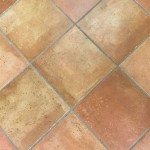Can You Use Tile Adhesive For Vinyl Flooring?
The question of whether tile adhesive can be used for vinyl flooring is a common one among homeowners and contractors alike. While both materials serve to create finished floor surfaces, their composition, installation methods, and required adhesives differ significantly. Attempting to substitute one for the other can have detrimental consequences, impacting the longevity, appearance, and overall performance of the flooring. This article will explore the distinctions between tile adhesives and vinyl flooring adhesives, examining the reasons why they are not interchangeable and the potential problems that can arise from such a substitution.
Understanding the fundamental differences between tile and vinyl flooring is crucial to grasping why their adhesive requirements diverge. Tile, whether ceramic, porcelain, or stone, is a rigid, inorganic material. It's inherently porous, albeit to varying degrees depending on the type of tile. Vinyl flooring, on the other hand, is a flexible, synthetic material typically composed of polyvinyl chloride (PVC) and other additives. Its surface is generally non-porous. These contrasting properties dictate the type of adhesive needed for proper installation.
Tile adhesives, often referred to as thin-set mortar or mastic, are designed to create a strong, permanent bond with the porous surface of the tile and the substrate beneath. They typically contain cement, sand, and polymers that provide enhanced adhesion and flexibility. These adhesives are formulated to withstand the weight and rigidity of tiles, as well as accommodate slight movements and expansions that can occur due to temperature and humidity fluctuations. Moreover, the porous nature of tile allows the adhesive to create a mechanical bond, where the adhesive physically penetrates the surface for increased strength.
Vinyl flooring adhesives, in contrast, are specifically engineered to bond a flexible, non-porous material to a generally smooth subfloor. These adhesives usually consist of synthetic resins, solvents, and additives that provide a strong, yet flexible, bond. They are formulated to allow for the natural expansion and contraction of the vinyl flooring without compromising the integrity of the bond. They must also prevent the vinyl from becoming brittle or discolored over time due to chemical reactions.
Key Point 1: Differences in Formulation and Chemical Composition
The chemical composition of tile and vinyl adhesives is a primary reason why they are not interchangeable. Tile adhesives are designed to interact with porous surfaces, often containing components that aggressively bond to the inorganic material. This interaction can be detrimental to vinyl flooring, as the chemicals can cause the vinyl to degrade, discolor, or even delaminate over time. The high alkalinity of some tile adhesives can also damage the plasticizers in vinyl, leading to brittleness and cracking.
Furthermore, many tile adhesives are water-based, designed to cure through evaporation. When applied to a non-porous surface like vinyl, the adhesive may not dry properly, leading to a weak bond and potential mold or mildew growth underneath the flooring. The moisture trapped beneath the vinyl can also damage the subfloor, particularly if it’s wood.
Vinyl adhesives, on the other hand, are formulated with specific polymers and resins that promote adhesion to the smooth, non-porous surface of vinyl. They are also designed to remain flexible after curing, accommodating the subtle movements of the vinyl material. Using a tile adhesive on vinyl would likely result in a rigid bond, which is not suitable for vinyl's flexible nature.
Consider the setting process. Tile adhesive frequently relies on a chemical reaction, sometimes creating a stronger hold than is needed, or even desirable, for vinyl. This can make future removal or repairs exceptionally difficult, potentially damaging the subfloor in the process. Vinyl adhesive, designed for flexibility, allows for easier removal and less damage when alterations are needed.
Key Point 2: Variations in Bonding Properties and Flexibility
The bonding properties required for tile and vinyl flooring differ significantly, primarily due to the materials' distinct characteristics. Tile, being rigid and heavy, requires an adhesive that provides a strong, permanent bond to prevent movement, cracking, and potential dislodgement. This bond needs to withstand significant stress and weight, especially in high-traffic areas.
Vinyl flooring, by contrast, requires an adhesive that offers a flexible, yet durable, bond. The flexibility is crucial to accommodate the expansion and contraction of the vinyl due to temperature and humidity changes. A rigid adhesive, like tile adhesive, would prevent this natural movement, potentially causing the vinyl to buckle, bubble, or crack. The adhesive must also be compatible with the vinyl's composition to prevent chemical reactions that could compromise the flooring's integrity.
Moreover, vinyl flooring often comes in sheets or planks, which require an adhesive that provides consistent and uniform coverage. Tile adhesive, especially thin-set mortar, is typically applied in a notched pattern, creating ridges and valleys. This uneven application can result in an inconsistent bond with vinyl flooring, leading to weak spots and potential failure.
The flexibility of vinyl flooring also allows it to conform to minor irregularities in the subfloor. However, using tile adhesive could negate this benefit, as the rigid adhesive might not effectively bond to these imperfections, creating air pockets and uneven surfaces. This can ultimately affect the appearance and durability of the vinyl flooring.
Key Point 3: Potential Problems and Long-Term Consequences
Using tile adhesive for vinyl flooring can lead to a myriad of problems, both short-term and long-term. One of the most immediate issues is the potential for poor adhesion. Tile adhesives, designed for porous surfaces, may not properly bond to the smooth, non-porous surface of vinyl. This can result in the vinyl lifting, bubbling, or shifting over time, creating an unsightly and potentially hazardous flooring surface. The lack of proper adhesion can also allow moisture to seep beneath the vinyl, leading to mold and mildew growth, which can pose serious health risks.
Another significant problem is the potential for chemical incompatibility. The chemicals in tile adhesives can react with the vinyl, causing discoloration, brittleness, and degradation. This can significantly shorten the lifespan of the vinyl flooring and require premature replacement. The cost of replacing the flooring, along with the added expense of removing the improperly installed material and preparing the subfloor, can be substantial.
Furthermore, using the wrong adhesive can void the manufacturer's warranty for the vinyl flooring. Most manufacturers specify the type of adhesive that must be used to ensure proper installation and performance. Failure to adhere to these specifications can invalidate any claims related to flooring defects or premature failure. This can leave homeowners with no recourse in the event of problems arising from the improper installation.
Finally, removing vinyl flooring that has been installed with tile adhesive can be extremely difficult and damaging to the subfloor. The strong, rigid bond created by the tile adhesive can make it nearly impossible to remove the vinyl without damaging the underlying surface. This can require costly repairs or even replacement of the subfloor, further adding to the overall expense of the project. It's crucial to prioritize the correct materials from the outset to avoid these costly and time-consuming issues.
In summary, while the temptation to use readily available tile adhesive for vinyl flooring might be present, it's a practice that should be avoided. The distinct properties of these materials and their corresponding adhesives necessitate a careful selection process to ensure a long-lasting and aesthetically pleasing flooring installation. Using the correct adhesive is an investment in the longevity and performance of the flooring, whereas attempting to substitute with an inappropriate product can lead to costly repairs, health hazards, and a compromised finished product.

What S The Best Glue To Use For Vinyl Flooring Sprayidea

What S The Best Glue To Use For Vinyl Flooring Sprayidea

How To Choose The Right Adhesive For Your Flooring Type

How To Install L And Stick Vinyl Tiles Houseful Of Handmade

How To Install L And Stick Vinyl Tiles Houseful Of Handmade

Dap Weldwood 1 Qt Floor Tile Adhesive 00136 Fry S Food

How To Install Ceramic Tile Over Vinyl Flooring

Luxury Vinyl Tile Installation Diy Family Handyman

Roberts 1 Qt Vinyl Composition Tile Floor Adhesive 2057 0 The Home Depot

Vinyl Tile Installation A Comprehensive Guide Gc Flooring Pros
Related Posts








